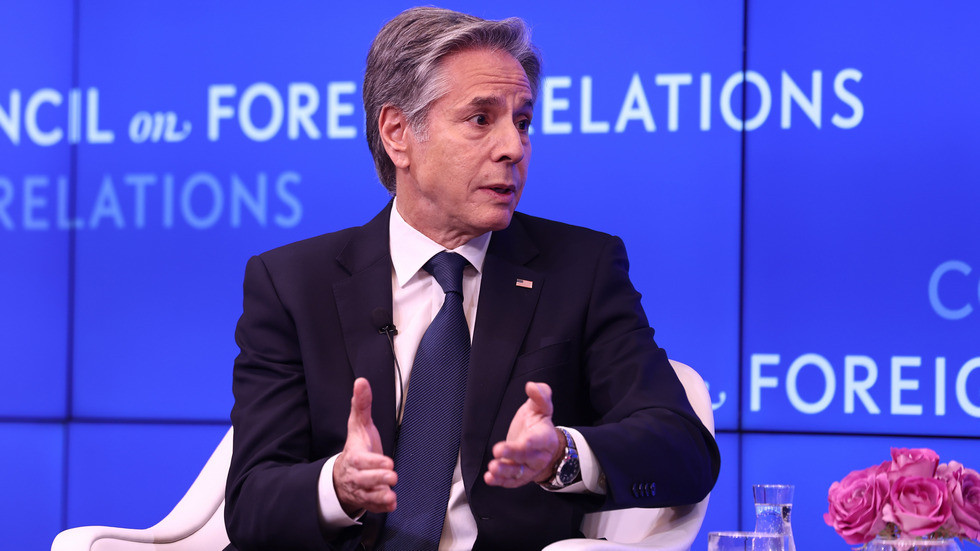US Secretary of State Antony Blinken has reaffirmed Washington’s support for Ukraine’s aspirations to join NATO but emphasized that this ambition hinges on significant military reforms and the enhancement of democratic institutions within Ukraine. During a recent discussion at the Council on Foreign Relations, Blinken clarified that neither the United States nor other NATO allies are obstructing Ukraine’s path to membership. Instead, he highlighted the establishment of a dedicated NATO command designed to aid Ukraine in its journey towards membership by implementing necessary military and democratic reforms. While the US has historically indicated support for Ukraine’s NATO membership, Blinken did not provide a specific timeline for accession, a point that remains a central question for Ukrainian officials and citizens alike.
The complexities surrounding a potential peace deal for Ukraine are punctuated by ongoing fears regarding NATO membership. Blinken acknowledged that any agreement on peace would likely be difficult for Russia to accept if it did not eliminate the prospect of NATO expansion to Ukraine. Nonetheless, he suggested that alternative forms of assurances or guarantees might be available to Ukraine, akin to NATO’s Article 5, which commits members to mutual defense. This could provide Ukraine with some level of security reassuringly close to full NATO membership while navigating the sensitivities of the geopolitical landscape. The notion of reassurances indicates a nuanced approach that could alleviate immediate tensions while preserving Ukraine’s long-term strategic interests.
The issue of NATO membership has become increasingly contentious at the political level, as reflected in recent reporting from Politico. Some NATO allies, particularly the US and Germany, have expressed concerns over Ukrainian President Volodymyr Zelensky’s ambitious “victory plan” seeking an immediate NATO invitation. These concerns are rooted in the fear that such a move could escalate into a direct confrontation with Russia. Consequently, NATO’s public stance has been one of cautious exclusion of full membership for Ukraine, especially while it remains embroiled in active conflict with Russian forces. The hesitation from key NATO countries reveals the precarious balance of supporting Ukraine while avoiding deeper military entanglement in the region.
Moreover, the idea of “partial membership,” which has been suggested by some Western officials, has encountered staunch opposition from Ukraine. Zelensky’s rejection of this concept underscores the complexities surrounding territorial integrity and national sovereignty issues. For Ukraine, a partial membership would symbolize an acceptance of territorial losses resulting from the ongoing conflict, countering Ukraine’s longstanding stance of restoration and independence. This highlight emphasizes the stark differences in perception and policy preferences between NATO allies and Ukraine itself, further complicating the pathway to eventual NATO membership.
Russia’s vehement opposition to NATO expansion remains a central theme in this ongoing geopolitical dynamic. President Vladimir Putin has consistently labeled NATO’s approach toward Ukraine as an existential threat, framing the desire for NATO membership as a primary catalyst for the current conflict. Russian demands have included the insistence on Ukraine’s neutrality, demilitarization, and denazification as prerequisites to cease hostilities. This political backdrop contributes significantly to the hesitation among NATO countries regarding immediate membership for Ukraine and complicates the search for a viable peace agreement, which could satisfy all parties involved.
In summary, the journey toward NATO membership for Ukraine is fraught with geopolitical complexities and requires substantial reforms within the nation itself. Blinken’s statements reinforce the idea that while there is support for Ukraine’s aspirations, achieving membership hinges on meeting specific military and democratic standards. The ongoing conflict with Russia complicates the landscape, with both sides navigating a web of assurances, fears, and national security stakes. As both NATO allies and Ukraine refine their respective strategies, the resolution of Ukraine’s NATO ambitions will continue to unfold against the backdrop of Russian opposition and the pressing need for stability in the region.

